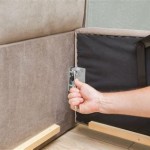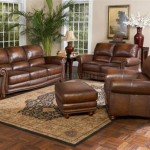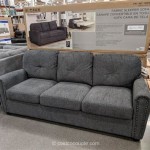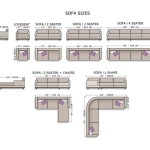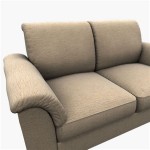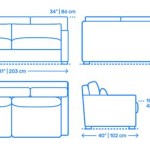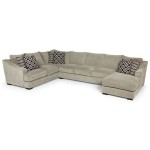The Enduring Appeal of Wood Frame Sofa Design
Wood frame sofas represent a cornerstone of furniture design, offering a blend of structural integrity, aesthetic versatility, and enduring style. The choice of wood as the primary framing material profoundly impacts the overall look, feel, and longevity of the sofa. Understanding the nuances of wood frame sofa design allows consumers and designers to make informed decisions that align with both functional needs and stylistic preferences.
The fundamental purpose of a wood frame is to provide a robust skeletal structure upon which the cushioning, upholstery, and ultimately the user's weight are supported. The design of this frame dictates the sofa's shape, size, and weight capacity. Careful consideration must be given to the type of wood used, the joinery techniques employed, and the overall frame construction to ensure a durable and comfortable seating experience.
Material Considerations: Selecting the Right Wood
The selection of wood is a critical aspect of wood frame sofa design, influencing both the structural integrity and aesthetic appeal of the finished product. Different wood species possess distinct characteristics in terms of strength, density, grain pattern, and cost. Hardwoods, such as oak, maple, and walnut, are commonly favored for their durability and resistance to wear and tear. Softwoods, like pine and fir, offer a more affordable alternative, but may require more reinforcement to achieve comparable structural strength.
Oak is a popular choice due to its exceptional strength and durability. Its distinctive grain pattern adds visual interest, and it accepts stains and finishes well. Maple offers a similar level of durability but with a smoother, more uniform grain, making it suitable for contemporary designs. Walnut is prized for its rich, dark color and elegant grain, lending a sense of luxury to the sofa. While more expensive, walnut provides exceptional stability and resistance to warping.
Pine, while a softwood, can be effectively utilized in sofa frames, particularly in rustic or country-style designs. It is often treated and reinforced to enhance its strength and prevent sagging. Fir is another softwood option that offers a good balance of affordability and stability. When using softwoods, careful attention must be paid to the joinery techniques to ensure a secure and long-lasting frame.
Beyond the physical properties of the wood, sustainability is an increasingly important consideration. Sourcing wood from responsibly managed forests ensures that the environmental impact of furniture production is minimized. Certifications such as the Forest Stewardship Council (FSC) provide assurance that the wood has been harvested in an environmentally and socially responsible manner.
Construction and Joinery: Ensuring Structural Integrity
The manner in which the wood frame is constructed and the joinery techniques employed are paramount to the sofa's overall strength and stability. Traditional joinery methods, such as mortise and tenon, dovetail, and dowel joints, provide exceptional strength and durability. These techniques involve interlocking pieces of wood to create a secure connection that can withstand significant stress.
Mortise and tenon joints are considered among the strongest and most reliable joinery methods. They involve a projecting tenon (a shaped end of one piece of wood) that fits snugly into a mortise (a hole or slot) in another piece of wood. This creates a robust connection that resists pulling and twisting forces.
Dovetail joints are characterized by interlocking, wedge-shaped projections that provide exceptional resistance to pulling forces. They are commonly used in drawers and cabinet construction, and can also be found in high-end sofa frames. Dowel joints utilize cylindrical pins (dowels) to connect two pieces of wood. While not as strong as mortise and tenon or dovetail joints, dowel joints offer a simple and effective method for reinforcing weaker connections.
In modern sofa frame construction, screws, nails, and adhesives are often used in conjunction with traditional joinery techniques to further enhance strength and stability. However, it is important to note that these fasteners should not be relied upon as the sole means of connection, as they can loosen or fail over time. Well-executed joinery, complemented by appropriate fasteners, provides the most durable and reliable frame construction.
The overall design of the frame is also crucial. Proper bracing and reinforcement are necessary to prevent sagging or warping, particularly in larger sofas. Corner blocks, strategically placed to reinforce joints, can significantly enhance the frame's structural integrity. The thickness of the wood used in the frame also plays a role, with thicker lumber generally providing greater strength and stability.
Stylistic Considerations: Shaping the Aesthetic
The design of the wood frame significantly contributes to the overall aesthetic of the sofa. The frame can be concealed entirely beneath upholstery, partially exposed for a subtle accent, or fully exposed as a prominent design feature. The choice depends on the desired style and the overall design concept.
In many traditional sofa designs, the wood frame is completely concealed beneath layers of padding and upholstery. This allows the focus to remain on the fabric and the overall shape of the sofa. However, even in these cases, the design of the frame is crucial, as it dictates the sofa's silhouette and provides the necessary support for the cushioning.
In contemporary designs, it is increasingly common to see portions of the wood frame exposed, adding a touch of natural warmth and texture to the sofa. Exposed legs, arms, or back panels can create a visually striking contrast with the upholstery, highlighting the craftsmanship and the quality of the materials. The wood can be finished with a variety of stains, paints, or oils to achieve the desired color and sheen. Natural wood finishes are particularly popular, showcasing the unique grain patterns and character of the wood.
The shape and detailing of the exposed wood frame can also significantly influence the sofa's style. Simple, clean lines create a modern and minimalist aesthetic, while more ornate carvings and moldings lend a traditional or classical feel. The choice of hardware, such as decorative tacks or nailheads, can further enhance the sofa's style and add a touch of visual interest.
The design of the wood frame must also be considered in relation to the other elements of the room. The color and texture of the wood should complement the flooring, walls, and other furniture in the space. The overall style of the sofa should also be consistent with the overall design theme of the room, whether it is modern, traditional, transitional, or eclectic.
Ultimately, the design of the wood frame is a critical element in creating a sofa that is not only comfortable and durable, but also visually appealing and stylistically harmonious with its surroundings. By carefully considering the material, construction, and stylistic implications of the wood frame, designers and consumers can create sofas that are both functional and beautiful.
The use of wood in sofa design has a long and storied history, evolving alongside changing tastes and technological advancements. From the handcrafted frames of antique sofas to the precision-engineered frames of modern designs, wood remains a versatile and essential material in furniture construction. Its natural beauty, strength, and adaptability make it an ideal choice for creating sofas that are both timeless and enduring.
The selection of appropriate upholstery is also vital in complementing the wood frame. The fabric’s color, texture, and pattern need to harmonize with the wood's finish and grain. For instance, a richly grained walnut frame might pair beautifully with a plush velvet or a luxurious leather, while a lighter maple frame could be enhanced by a crisp linen or a patterned cotton.
Furthermore, the scale of the sofa and its wood frame must be carefully considered in relation to the room's dimensions. A massive, heavily framed sofa in a small space can overwhelm the room, while a delicate, minimalist frame might get lost in a large, open space. Proportional considerations are essential to achieving a balanced and harmonious aesthetic.

Designer Wooden Sofa Simple Set Designs Casa Furnishing

Wooden Sofa Designs 100 Latest Set Design Ideas At Ouch Cart

Eco Friendly Northern Europe Solid Wood Frame With Seating Cushion Modern Sofa At Best In Foshan Ekar Furniture Co Ltd

Inspiring Open Frame Wooden Sofa Set Design Ideas For Your Home And Patio Woodworking Project

Alice Springs 3 Seaters Folding Design Extension Sofa Bed With Wood Frame Agape Furniture

Buy Wooden Sofa Set At Up To 70 Off Street

Create A Bohemian Oasis With Our Cane Boho Sofa Set For Living Room And Garden

Royaloak Ashoka Wooden Sofa Two Seater

Simple And Stylish Wooden Sofa Home Decore Aesthetics Inspiration

2024 Latest Wood Frame Modern Simple Hotel Bedroom Sofa Design Leather Made In China Com


